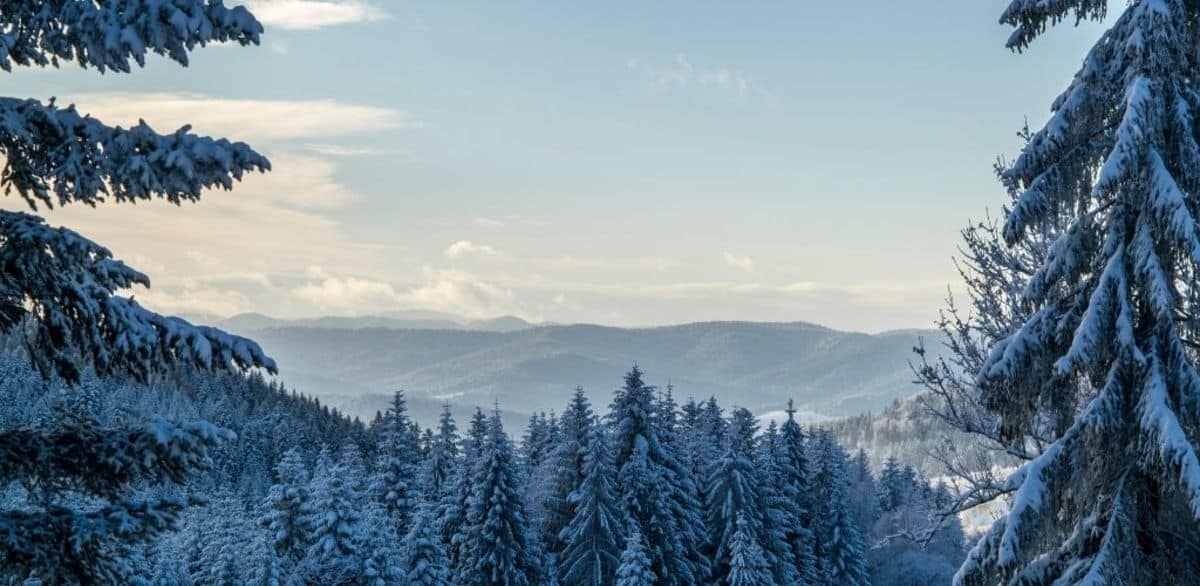After The Winter Poem Meaning
The poem is adequately simple, using imagery that all readers can appreciate. The poet discusses natural scenes, similar rivers, birds, flowers (like blue-bells and orchids), and more. He's seeking out a place where the beauty of summer and warmth never fade. It's likely that this is continuing in for a broader platonic that may take a different grade other than that which is presented in 'Later on the Winter.'

Summary
'After the Winter' by Claude McKay is a beautiful and unproblematic piece of poetry well-nigh an idealized fugue on the "summer isle" away from winter.
The speaker spends the starting time stanza initiating his dream and suggesting that when winter is over, they're going to exist able to "turn" their faces toward the summertime isle and forget well-nigh the common cold, inhospitable past. When they get towards the summer isle, they'll observe peace. There volition be everything that one could hope to detect in the natural world. This includes rivers, flowers, cotton fiber trees, and more. The poet uses personification to depict these scenes as well every bit good examples of imagery.
Detailed Analysis
Stanza One
Some twenty-four hours, when trees have shed their leaves
And against the morning time'southward white
The shivering birds beneath the eaves
Have sheltered for the night,
Nosotros'll plough our faces southward, love,
Toward the summer island
Where bamboos spire the shafted grove
And wide-mouthed orchids smile.
In the first stanza of 'After Winter,' the speaker begins past noting that sometime in the futurity, things are going to change. He'due south filled with hope as he considers what the world is going to be similar when the "trees have shed their leaves," and he and the listener turn their faces "Toward the summer isle." When winter comes and passes, the ii are going to exist able to step away from their lives to a place where "bamboos spires the shafted grove / And broad-mouthed orchids grin." This final line is an instance of personification. It imbues the orchids with a man characteristic—the ability to smile. In these lines, readers should besides note the examples of alliteration, particularly the repetition of sibilance.
Stanza Two
And we volition seek the quiet loma
Where towers the cotton fiber tree,
And leaps the laughing crystal rill,
And works the dawdling bee.
And nosotros will build a cottage in that location
Beside an open up glade,
With blackness-ribbed bluish-bells blowing well-nigh,
And ferns that never fade.
The second stanza of 'Later on the Winter' starts with the word "And," ensuring the reader is aware that the poem is picking upwardly where it left off in the previous stanza. One time they're there on their summer isle, they're going to "seek the quiet hill" and find a place to be at peace. In that location, they'll find "the laughing crystal rill," another example of personification, and the working "dawdling bee." The sense-imagery in these lines is quite effective. The poet is painting a scene that's beautiful to imagine and conveys a very clear sense of peace.
In that location are besides examples of anaphora in these lines with the repetition of "And" at the offset of the lines. It begins with lines one, three, four, v, and eight. This helps create another literary device, aggregating. The speaker is edifice upwardly features of his life with "you," and each adds to the overall experience.
He tells the listener that together, they're going to build a cottage where they can live "Abreast an open glade" with "blue-bells blowing about" and "ferns that never fade." Alliteration is again quite important in these last lines. It adds to the overall feeling of rhythm in the verse form and, therefore, the feeling of peace the speaker is aiming to create.
Structure and Course
'Later the Winter' by Claude McKay is a ii-stanza verse form that is separated into two sets of eight lines, known as octaves. These octaves follow a unproblematic rhyme scheme of ABABCDCD, changing end sounds between the ii stanzas. The meter changes throughout the poem, ranging from effectually seven to 9 syllables per line.
Literary Devices
Throughout 'Afterward the Winter,' the poet makes apply of several literary devices. These include but are non express to:
- Alliteration: can be seen when the poet repeats the aforementioned consonant sound at the beginning of multiple words. For example, "birds beneath" and "summertime" and "spire" in the first stanza.
- Enjambment: occurs when the poet cuts off a line before its natural stopping betoken. For example, the transition between lines one and two as well equally lines 3 and four of the get-go stanza.
- Imagery: can be seen when the poet creates particularly interesting and compelling descriptions. For instance, "Where bamboos spire the shafted grove / And wide-mouthed orchids smile."
FAQs
What is the purpose of 'After Wintertime?'
The purpose is to share an platonic future, a dream, that the speaker is engaging in. Whether or not this futurity is possible isn't the point. By speaking with passion and certainty, the speaker and his listener are able to relish and imagine that their life is going to turn out this way.
What are the themes of 'Afterwards Wintertime?'
The themes are nature, peace, and the future. Finding peace is an incredibly of import part of this poem. McKay's speaker spends near of information technology considering the perfect scenario for himself and the person he's talking to and nigh.
What is the tone of 'Later Wintertime?'
The tone is peaceful and hopeful. The speaker is looking towards the future and feeling like together, he and the listener are going to be able to make a good life for themselves. Once they tin get away from the wintertime, they'll be content on the summer isle effectually the blossoming flowers and trees.
Who is the speaker in 'After Winter?'
The speaker is someone who is quite hopeful almost the future or is at least willing to put their dreams into words. They're speaking to someone, likely someone they're in a relationship with, and expressing their want to make a life with this person abroad from the coldness of winter and that of broader guild.
Similar Poetry
Readers who enjoyed 'After Winter' should also consider reading other Claude McKay poems. For instance:
- ' Harlem Shadows ' – describes their feel while likewise acknowledging their strength.
- ' America ' – explores the good parts of the country, the strength and vigor information technology contains also as the bad.
- ' Enslaved ' – turns bitterness, hatred, and rage into an eloquent art form that anyone tin read and wonder at.

After The Winter Poem Meaning,
Source: https://poemanalysis.com/claude-mckay/after-the-winter/
Posted by: ericksonfaut1987.blogspot.com



0 Response to "After The Winter Poem Meaning"
Post a Comment